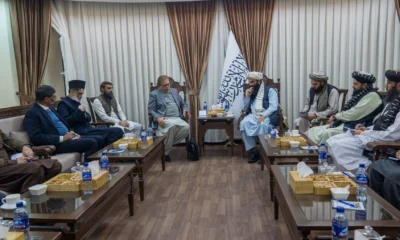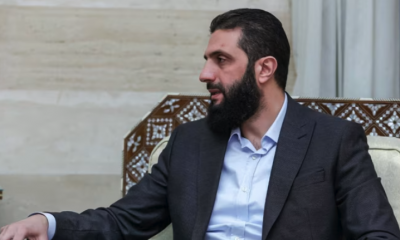Asia
From Kabul University to the leadership of terrorist group: Who is Sanaullah Ghaffari?
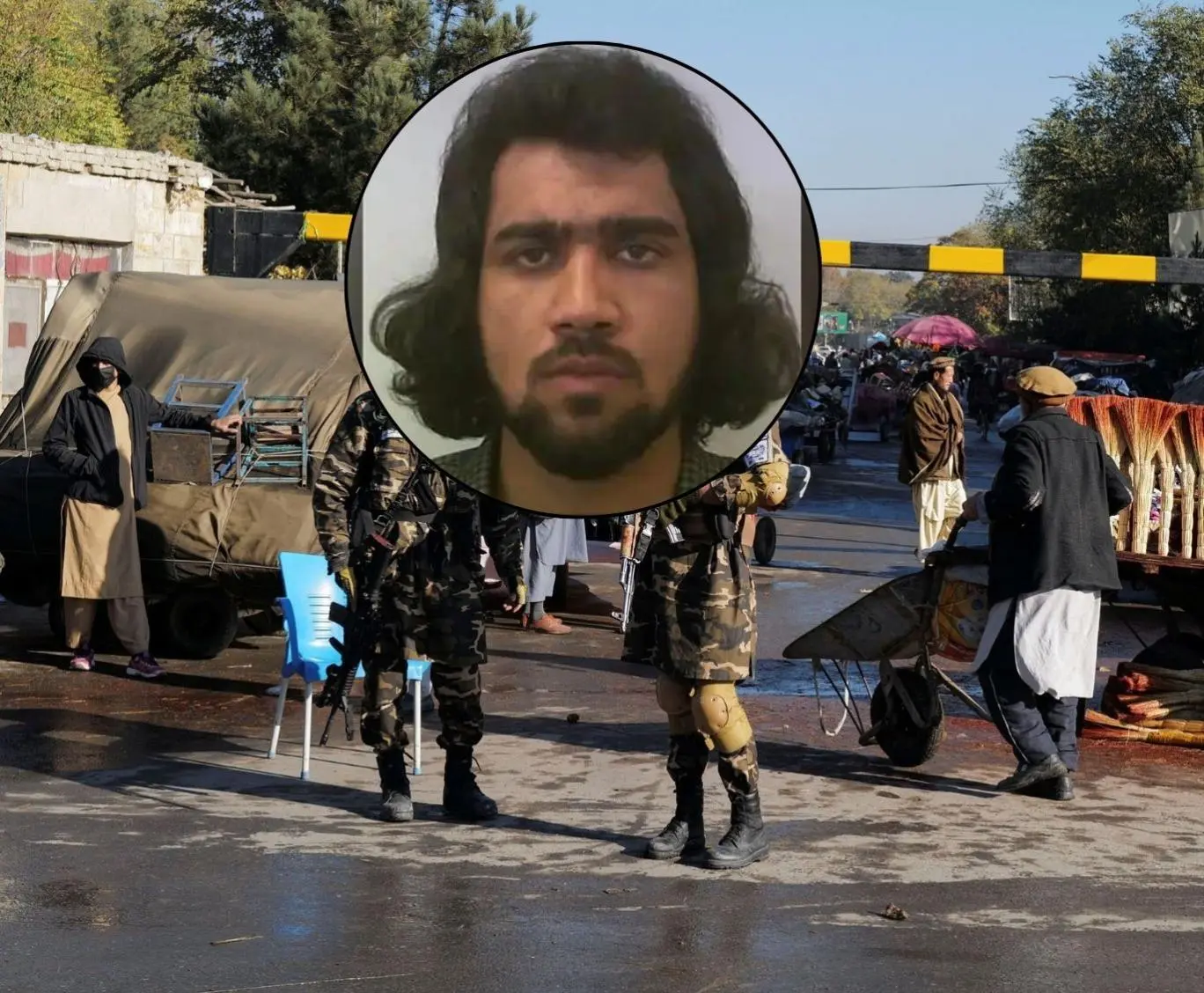
After the deadly attack of IS-K on the Crocus concert hall in Moscow, which killed more than 140 people and injured dozens, the name of the young leader of this group has once again made headlines in different media platforms.
But about the real identity of this man who is behind the deadly attacks of IS-K, contradictory and often misleading information has always been reflected in the media.
Now, through interviews with former acquaintances and some information sources who have followed this case, the Independent Farsi reported it has obtained new details about his private life and her path to the leadership of the dreaded IS terrorist network.
Sanaullah Ghaffari, known as Shahab al-Muhajar, is sometimes mentioned as a member of the Haqqani terrorist network. In some cases, a fake identification card of him as a security guard of the former vice president of Afghanistan has been also published, and recently there are rumors about his membership in the rank of former Afghan army in the international media.
But who is Sanaullah Ghafari, where is he from, and how did he become the leader of the Khorasan branch of IS-K?
The Khorasan branch of IS, the only active operational branch of the group in Central Asia based in Afghanistan, has planned and executed several deadly attacks outside Afghanistan in the past several years.
The leader of this IS-K branch, which is now becoming a serious threat to the security of the region, is a young man named Sanaullah Ghafari, who is from Kabul, the capital city of Afghanistan.
Sanaullah Ghaffari is Pashtoon and from Kabul
Sources among the relatively distant members of Sanaullah Ghafari’s family have spoken about his family’s ethnic identity and his residency. According to the source, Sanaullah is the son of Abdul Jabbar, a former member of Hezb-e-Islami led by Gulbuddin Hekmatyar and originally from the Kharuti tribe of the Pashtun ethnicity.
His family, who are strongly Hanafi religious followers, live in Khoruti village between Mirbeche Kot and Shekardera, Kabul.
Ghafari’s family is not religious extremist, and they had no Salafist tendencies. However, Sanaullah Ghafari was attracted to Salafist ideas and joined terrorist groups since he was a student at Kabul University between 2012 and 2014.
In its recent report, the Reuters news agency quoted Taliban sources identified Sanaullah Ghafari as a Tajik origin and also a member of the national army of the former Afghan government, a claim that reliable sources in the National Security Department of the former Afghan government categorically denied.
A senior officer of Afghanistan’s National Security Department, who personally followed Sanaullah Ghaffari’s case during his tenure said that Ghaffari was never part of the security forces of the Afghan government rather he was attracted to Salafist groups when he was a student at Kabul University.
Then, due to the tact he showed in religious preaching among students, Haqqani network facilitated his travel to Waziristan of Pakistan.
Ghaffari took military courses in Waziristan under the supervision of Haqqani network and because he was familiar with computer programs, he worked in the field of designing, photographing and editing photos and videos for the Haqqani Network.
But it wasn’t long before he actually claimed the responsibility of planning the Haqqani network’s terrorist attacks, and while still working anonymously and far from fame, he became a serious force for the Haqqani network.
Playing with anonymous names and becoming leader of IS-K
Contradictory information has been published in the media outlets about how Sanaullah Ghafari joined the IS-K terrorist group.
Some have said that he is the liaison between the Haqqani network and the IS-K group, and some have also claimed that Sirajuddin Haqqani forced him to join IS-K. But these are just claims that have no valid reason to prove them.
But a senior national security officer of the former Afghan government revealed the secret of Sanaullah Ghafari’s joining IS-K as follows: One of the usual tricks of this man (Sanaullah) was to play with different names in different situations. When Sanaullah Ghaffari worked for the Haqqani network, he never introduced himself to two individuals or two groups with the same name during the planning and execution of the attacks, but he communicated with operational networks with a thousand different names.”
According to this officer, around 2014, when IS-K emerged in Afghanistan, with the help of this wide connection with its terrorist networks with different names, he got close to IS-K and finally fell from the Haqqani network to IS-K.
This senior national security officer cited an example during his mission to prove this claim and said: After IS-K attacks intensified in Afghanistan, we in the National Security Department, every time we arrested people related to IS-K who were involved in the attacks, we asked them about the identity of their commander and they mentioned different names. But when we asked them to describe the details of the face of their leader or commander, they all described the details of a specific face, and by comparing the portraits we had drawn based on their narratives, we realized that all these names belong to one person, and that is Sanaullah Ghafari.
Anonymous activity aimed to protect IS-K leader
In February 2022, the United States announced a reward of up to 10 million dollars for information leading to the identification and arrest of the leader of the Khorasan branch of IS.
There are several photos of Sanaullah Ghafari, which the US State Department has published as photos of the leader of IS-K and announced his age as 29 years old. But informed sources in the intelligence apparatus of the former government of Afghanistan said that the published photo of the IS-K leader is about 10 years ago and he was almost 24 years old in 2014 and 2015, which means that he is about 34 to 35 years old now.
Meanwhile, a classmate of Sanaullah Ghafari at Kabul University said that he was a university student at least 10 years ago and was over 22 years old.
He also corrected the information published in the media about Ghaffari’s field of study and said that they were classmates at Kabul University’s Faculty of Economics.
This is while some media have mentioned Sanaullah Ghaffari’s education at Kabul Polytechnic University of Engineering and some others at Kabul University’s Faculty of Theology.
Meanwhile, the security sources revealed some tips about the protection methods of the IS-K leader. The senior officer of the National Security Department of the previous government of Afghanistan said that Sanaullah Ghafari tries to operate in complete anonymity and for this reason “he never has a mobile phone and a special protection team is not seen around him”.
Sanaullah Ghaffari survived several attacks
However, the senior security officer noted that he had survived several attacks by the Afghan National Security Forces.
This source clarified: “In 2018, the National Security Forces of Afghanistan carried out two attacks to arrest or kill Sanaullah Ghafari in the small village of Kochkan in Shakardara, Kabul, but he survived these attacks and was not captured.”
He added: “The leader of IS-K has only one special assistant named Salahuddin, who is apparently one of his university classmates and now works as the operational deputy of IS-K and is always by Sanaullah Ghafari’s side.”
Regarding the residence of the IS-K leader, it is said that he has traveled to Pakistan on several occasions, but security sources confirmed that Sanaullah Ghafari has been in Afghanistan all the time, except for the training course he took in North Waziristan under the supervision of the Haqqani network. And now he lives inside Afghanistan.
The deep influence of IS-K in the Taliban system
In the last two years and seven months after returning to power in Afghanistan, the Taliban has always claimed that they have suppressed IS-K in Afghanistan and that this group is no longer considered a threat in Afghanistan.
In the latest case, Zabihullah Mujahid, the spokesman of the Taliban said that IS-K has lost its operational capability in Afghanistan.
But the information of the intelligence sources of the former government of Afghanistan is speaking otherwise. These sources say that civilians are often targeted in Taliban operations, which are carried out from time to time under the name of destroying IS-K shelters, while IS-K members are not only present in their hideouts in Afghanistan, but have also widely infiltrated the ranks of the Taliban.
As an example, this source pointed to the murder of Abdul Rahim Haqqani, one of the leader of the Haqqani network, in a suicide attack in Kabul and said: The murder of Abdul Rahim Haqqani was planned by a former member of the Haqqani network named Haji Bashir, who joined the Salafi groups in Kabul prison and was recruited by IS-K.”
He furthered: “Haji Bashir hired Abdul Rahim Haqqani’s driver to take the suicide bomber to the premises of the religious school that Abdur Rahim Haqqani was in charge of.”
According to security sources, a large number of Taliban members who were in Afghan prisons in recent years were attracted to Salafist ideas and after being released from prison, they often joined IS-K.
This example shows that contrary to the claims of the Taliban, IS-K has influence in different layers of the Taliban system. The deadly attacks that IS-K recently carried out in Iran, Pakistan and Russia have been attractive and encouraging to some middle-ranking members of the Taliban.
Some reports, including the report of the United Nations Security Council, show that Daesh has about four to six thousand fighters (along with their families) in Afghanistan, some of whom are former members of the Taliban, while other people who went to Afghanistan from Iran and regional countries also joined IS-K group.
Information from security sources shows that some members of the main branch of IS-K, who fled from Iraq and Syria go to Iran and from there to Afghanistan through illegal means.
Is it possible to contain the growing threat of IS-K
After the withdrawal of US and NATO forces from Afghanistan, the US claimed to continue the fight against terrorism in this country through aerial surveillance. But the point is that the US uses the Taliban as an intelligence force on the ground to identify and target threatening situations.
Security sources in the previous government of Afghanistan said that the Taliban currently do not have the capacity and ability to collect the information needed by the US Air Force, and as long as there is no necessary force on the ground, there is no possibility of air operations against terrorist groups.
Therefore, it seems that there is currently no serious air threat to IS-K in Afghanistan, and for this reason, this group is freely planning and executing complex and deadly attacks inside and outside of Afghanistan.
Asia
US cries to China as Washington begins airstrikes in Iran
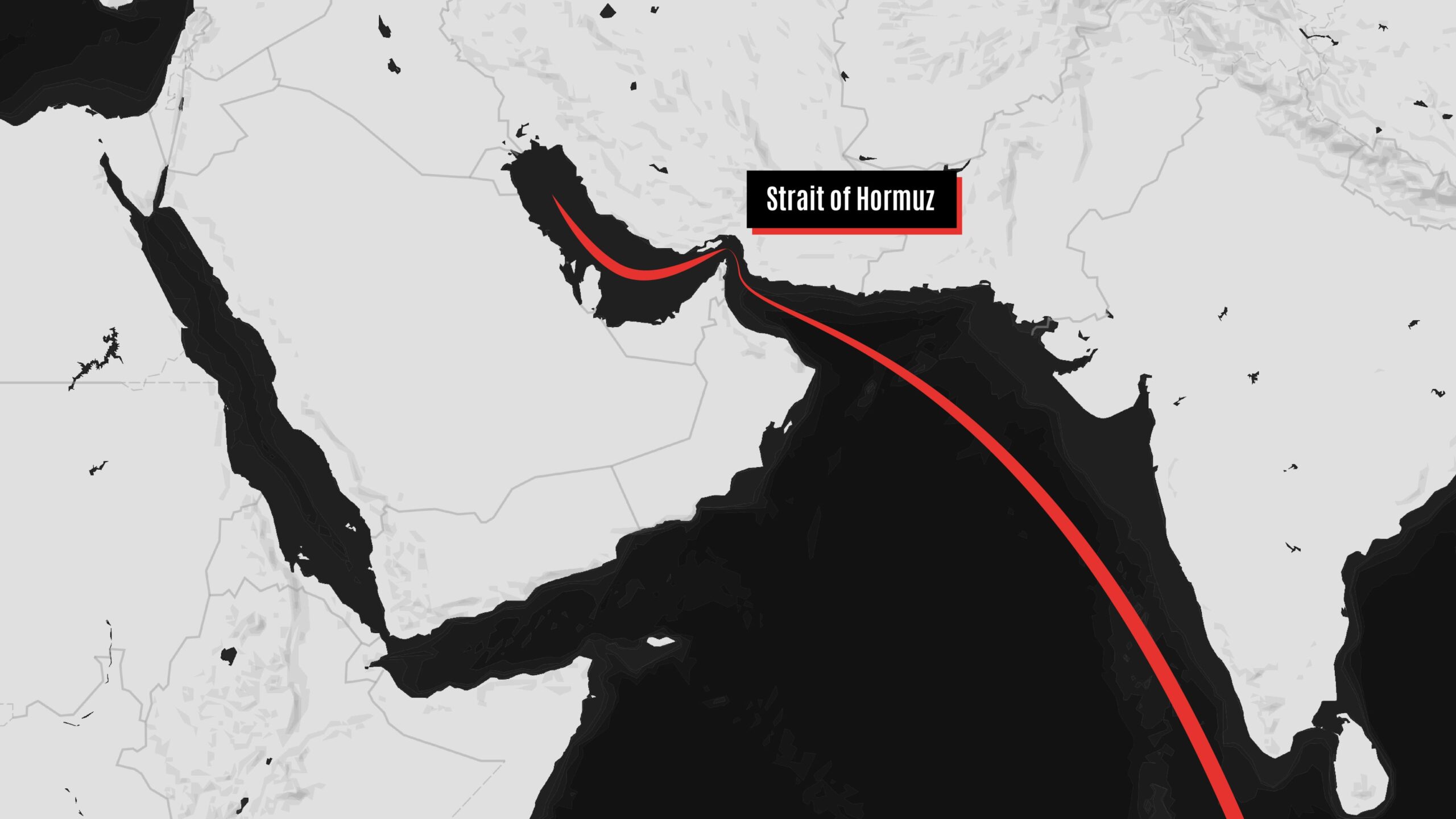
While the Middle East is going through one of its most tense periods, the world has been shocked by the news of a direct attack by the United States on Iran’s nuclear facilities. Washington has announced that Iran’s nuclear facilities no longer exist. At the same time, Tehran has warned in a strong tone that it will respond to this aggression.
This action was immediately met with widespread regional and international reactions. The United Nations, the European Union, global powers such as Russia and China, and America’s traditional allies in the West each took their own stance.
At an emergency meeting of the United Nations, Secretary-General Antonio Guterres described the move as a dangerous turn in an already crisis-ridden region. A wave of criticism has also emerged within the United States, with some describing the attack as successful.
At the same time, a number of lawmakers from both the Republican and Democratic parties consider Trump’s action to be without congressional authorization and unconstitutional.
Some reactions:
Russian envoy: US attack carried out without any provocation from Iran.
US Representative: The Iranian regime should not have nuclear weapons.
Iran’s ambassador to the Security Council: America once again sacrificed its security for Benjamin Netanyahu.
Israeli Ambassador to the Security Council: America changed the course of history by attacking Iran.
Rafael Grossi, the head of the International Atomic Energy Agency: Military attacks should not be carried out on nuclear facilities, saying he is ready to immediately travel to all countries regarding this case.
UK UN envoy: Military action alone cannot address concerns about Iran’s nuclear program, saying his country was not involved in Iran attack, referred to concerns about Iran’s nuclear program and said that military action alone cannot permanently address concerns about Iran’s nuclear program. He called on Iran to exercise restraint and urged the parties involved to return to the negotiating table.
France: Now is the time to end the attacks and return to negotiations.
But now why US cries to China for help to reopen Strait of Hormuz
Soon after a US airstrike in three locations, Iran closes the Strait of Hormuz, one of the world’s most important shipping routes. Now this move puts the US in trouble and US Secretary of State Marco Rubio has called on China to prevent Iran from closing the Strait of Hormuz.
However, it seems that the US is too late and according to Iran’s state-run Press TV, the decision was made by Iran’s Supreme National Security Council.
The US understands that any disruption on the supply of oil would have profound consequences for the economy and wants to play an emotional card with China to convince Iran to reopen the route as Beijing is also one of the largest buyers of Iranian oil.
It is reported that 20 percent of the world’s oil passes through the Strait of Hormuz, and major oil and gas producing countries in the Middle East use this route to export energy.
Meanwhile, US President Donald Trump has said that regime change is inevitable if the Islamic Republic cannot “make Iran great again.” His statement came following US military strikes on Iranian military facilities.
Iran: Game is not over even assuming the complete destruction of the nuclear sites
Ali Shamkhani, advisor to Ayatollah Ali Khamenei, the religious leader of Iran, has said in response to the US attacks that even assuming the complete destruction of the nuclear sites, the “game is not over”.
“Even assuming the complete destruction of the sites, the game is not over; because the enriched materials, indigenous knowledge, and political will remain intact,” he said.
He noted that “now the political and operational initiative with the right to self-defense is in the hands of the side that knows how to play smart and avoids blind shooting.”
Asia
Japan diverges from G7, urging restraint in Israel-Iran conflict
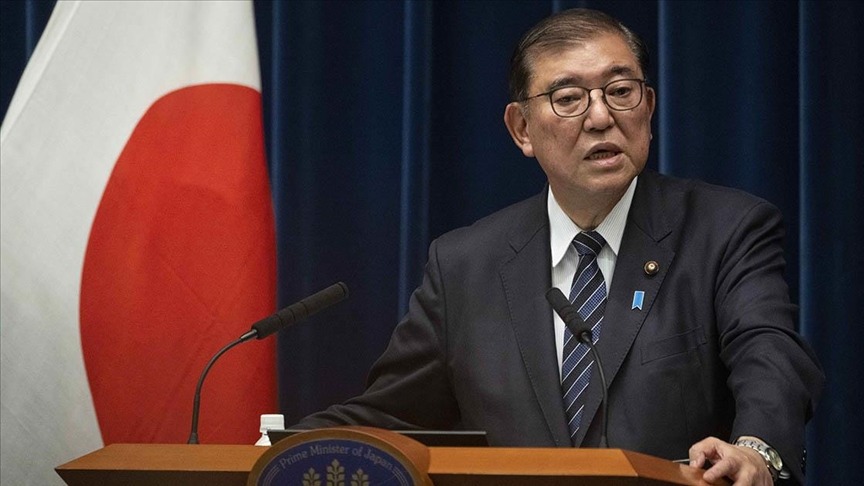
Japanese Prime Minister Shigeru Ishiba has affirmed Tokyo’s position of calling for “maximum restraint” from both Israel and Iran, despite a G7 statement earlier this week that supported Israel’s “right to self-defense.”
During a meeting of ruling and opposition party leaders on Thursday, Ishiba stated, “What the foreign minister said is the stance of the Japanese government. The G7 is the G7,” as reported by Tomoko Tamura, head of the Japanese Communist Party.
Japan, a close US ally in Asia, has long maintained friendly relations with Iran and has historically adopted a neutral approach to Middle East diplomacy, distinguishing itself from the pro-Israel stance of US administrations. Tokyo relies on the Middle East for the overwhelming majority of its crude oil imports.
G7 leaders convened in Kananaskis, Canada, and issued a statement backing Israel’s attacks on Iran. The statement affirmed Israel’s right to self-defense and condemned Iran as the “main source of regional instability and terrorism.” On June 13, when Israel’s attacks on Iran began, Japanese Foreign Minister Takeshi Iwaya declared: “The use of military force while diplomatic efforts are ongoing… is completely unacceptable and a source of deep regret. The Japanese government strongly condemns these actions.”
Iwaya added, “Japan is gravely concerned about the continuation of retaliatory attacks and strongly condemns any actions that could further escalate the situation.”
He continued, “Japan urges all parties to exercise maximum restraint and strongly calls for a de-escalation of tensions.”
During the meeting of party leaders, Tomoko Tamura, head of the Japanese Communist Party, highlighted the apparent contradiction between Iwaya’s statements and the joint G7 communiqué, suggesting the government was applying a “double standard.”
Prime Minister Ishiba responded, “What the foreign minister said is the stance of the Japanese government. The G7 is the G7.”
Meanwhile, the foreign minister announced at a press conference on Friday that a total of 87 Japanese nationals and their family members had been evacuated by land from Iran and Israel. Sixty-six individuals were evacuated from Iran to neighboring Azerbaijan, and 21 were evacuated from Israel to Jordan.
Following additional requests from Japanese citizens, a second land evacuation from Iran is scheduled for Saturday. Currently, there are approximately 220 Japanese nationals in Iran and about 1,000 in Israel.
In preparation for potential air evacuations, the government plans to dispatch two Air Self-Defense Force military transport aircraft to Djibouti in East Africa to have them on standby. With airports in Iran and Israel closed, Iwaya noted that the aircraft could be used if, for example, the airports reopen and conditions permit an airlift.
Asia
Iran-Israel war: Why US discusses regional conflict with Pakistan
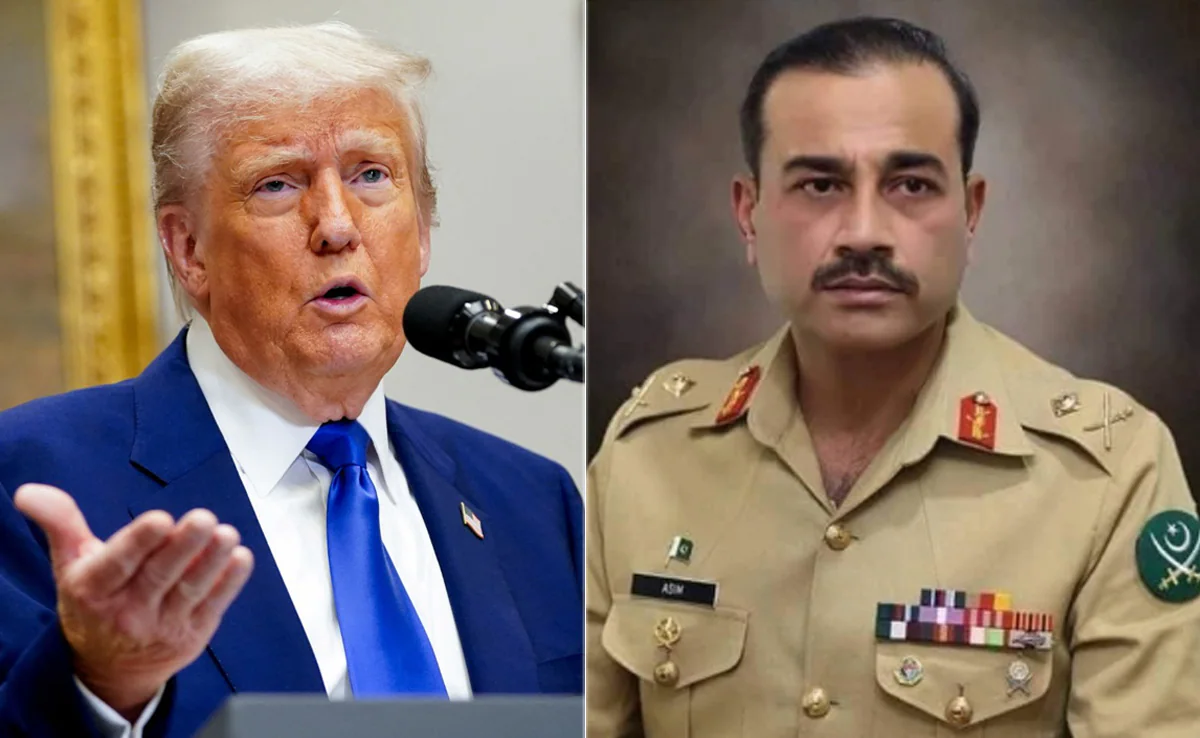
US President Donald Trump and Pakistan’s Army Chief General Asim Munir held a special and important meeting during a time when tensions are rising in the Asian region. The meeting was held on Trump’s invitation and was not open to the media. However, both sides have released official statements afterward, which states that the main topics were discussed
The meeting focused on the ongoing conflict between Iran and Israel, Pakistan–India relations, especially the Kashmir issue, the situation in Afghanistan and future US–Pakistan cooperation.
Pakistan has recently improved its strategic position in the region. It has shown strong ties with China and is the only South Asian country openly supporting Iran in its conflict with Israel. Meanwhile, Pakistan remains an important player in Afghanistan.
Why the Pakistani Army Chief was invited to the US?
Although Pakistan has an elected civilian government, important decisions—especially related to foreign affairs and security—are often handled by the military. That’s why General Asim Munir was invited to meet Trump instead of the Prime Minister, General Munir’s influence has grown recently. After tensions with India, he was given the title of Field Marshal. His meeting with Trump is seen as a sign of his importance in both Pakistani and international politics.
According to the Pakistan Army’s media wing (ISPR): General Munir thanked President Trump for helping to ease recent tensions between Pakistan and India. Trump praised Pakistan’s role in fighting terrorism. Both agreed to work together in the future, especially in: Trade, Technology Minerals and energy Artificial intelligence Crypto currency and regional peace efforts as well.
President Trump also appreciated General Munir’s leadership during difficult times. Munir invited Trump to visit Pakistan, and Trump reportedly accepted the offer in principle.
Why US former peace envoy to Afghanistan, Khalilzad is not trusting Pakistan’s army chief
Former U.S. diplomat Zalmay Khalilzad criticized the meeting. He said General Munir cannot be trusted and reminded the U.S. that Pakistan has supported groups that harmed American soldiers in the past. According to Khalilzad, General Munir may be trying to get U.S. support for his interests in Afghanistan, which he believes could be risky for America.
Though no official list of US demands was made public, reports suggest a meeting was held in Saudi Arabia earlier, where American officials spoke with top Pakistani leaders. During that meeting, the U.S. reportedly made four key requests: Pakistan should help the U.S. in counterterrorism operations when needed. Pakistan should slowly reduce its relations with China. Pakistan should recognize Israel after Saudi Arabia does. If the U.S. attacks Iran, Pakistan should support the U.S. instead of staying neutral.
These demands are similar to earlier U.S.–Pakistan arrangements during the Cold War and the War on Terror.
What could be expected in the future?
This meeting could mark the beginning of a new phase in US–Pakistan relations. In the past, Pakistan helped the U.S. during the Soviet-Afghan War and after 9/11. Now, with tensions involving Iran, India, and Afghanistan—and China expanding its role—the U.S. may again be looking to Pakistan as a key partner in the region.
Time will tell whether this leads to a long-term partnership or just another temporary agreement based on short-term goals.
-
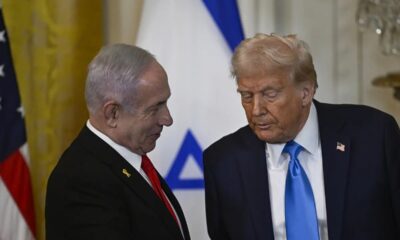
 Middle East3 days ago
Middle East3 days agoUS to launch major bombing campaign against Iran this weekend, Hersh reports
-

 Diplomacy1 week ago
Diplomacy1 week agoFormer diplomat warns forcing Iran out of the NPT is the greatest danger
-

 Middle East6 days ago
Middle East6 days agoIran targets Mossad and Unit 8200 in missile attack on Tel Aviv
-
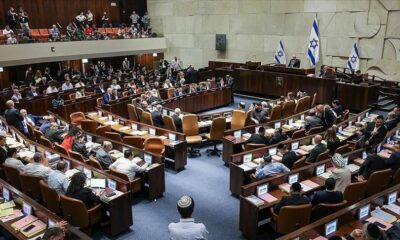
 Middle East2 weeks ago
Middle East2 weeks agoNetanyahu’s government survives no-confidence vote as Haredi crisis is delayed
-

 Diplomacy1 week ago
Diplomacy1 week agoFormer CIA analyst says Israel used ceasefire talks as a trap
-
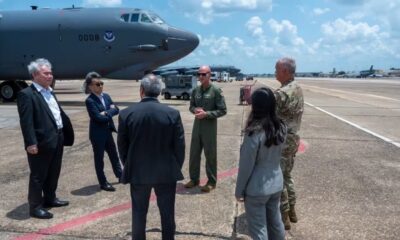
 Asia2 weeks ago
Asia2 weeks agoJapan, US showcase B-52 bombers in nuclear deterrence dialogue
-

 Middle East1 week ago
Middle East1 week agoIranian missile attack causes heavy damage across Israel
-
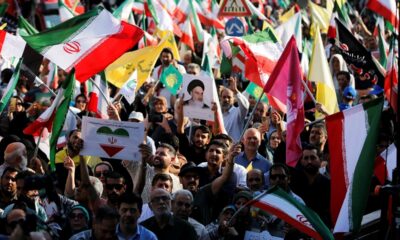
 Diplomacy1 week ago
Diplomacy1 week agoChinese academic analyzes Israel-Iran conflict for Harici: Iran holds strategic importance for China






